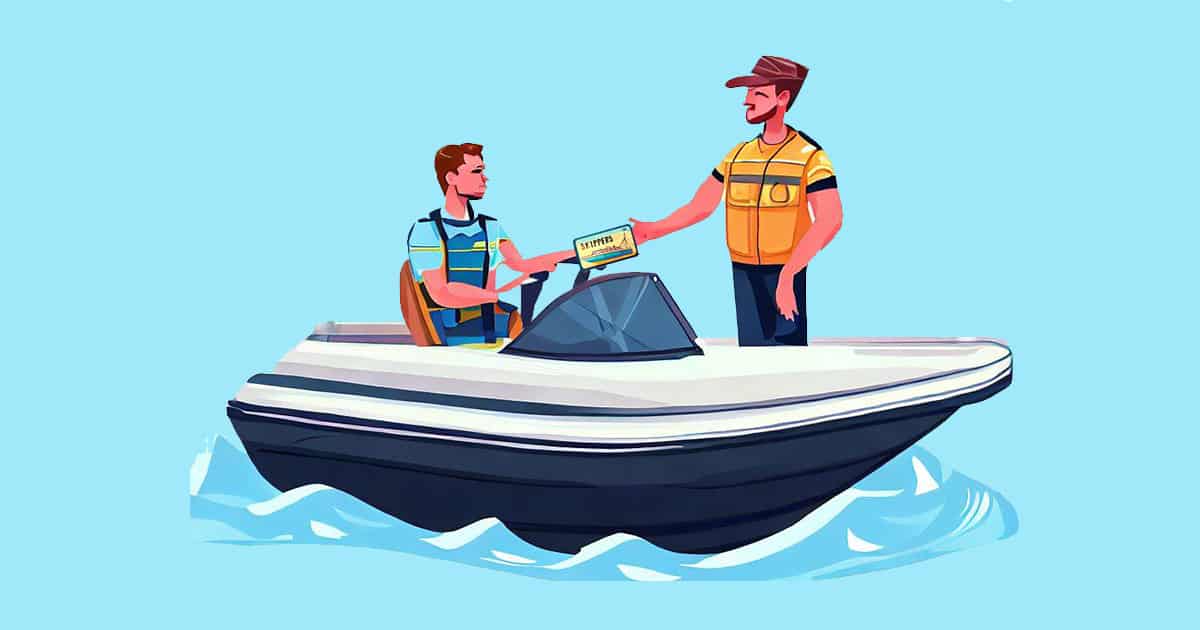Like Our Page :
Sea Safe Boat School
Tony or Arran
0429 146 201
Like Our Page :
Sea Safe Boat School
Tony or Arran
0429 146 201

Embarking on the journey to obtain a Skipper’s Ticket in Western Australia is an essential step for anyone wishing to navigate the state’s waterways safely and responsibly. A Skipper’s Ticket, equivalent to a driver’s licence for the water, ensures you have the necessary skills and knowledge to operate a recreational vessel. Whether you are a seasoned boater or new to the experience, this guide outlines everything you need to know, from eligibility requirements to training options, assessments, and associated fees. By following these steps, you’ll be well-prepared to enjoy Western Australia’s stunning marine environments with confidence and compliance.
Here are the detailed steps to get a Skipper’s Ticket:
These eligibility checks help determine if you meet the necessary requirements or even if you need an RST.
Age is a requirement to get a skipper’s ticket. You must be 18 years old or above.
If you are under 18 years old, you are required to have a letter of consent signed by your parent or guardian to take the assessment. If your surname differs from your parent or guardian’s, you must also produce primary identification to prove your relationship to them.
When considering the pursuit of a Recreational Skipper’s Ticket (RST), it’s important to note that there are certain qualifications that could potentially eliminate the need for one.
If you have a valid skipper’s ticket from another state or country that is equivalent to the RST, you may not need a new license. The same applies if you have a commercial marine deck certificate of competency.
Keep in mind that the Department of Transport (DoT) needs to recognize any equivalent qualification before you can be authorized to skipper a recreational vessel. See the equivalent qualifications here.
The length of your stay in Western Australia is important in deciding if you need an RST. If you already have a valid skipper’s ticket from another state or country, you don’t need to get an RST unless you stay in Western Australia for less than 3 months.
However, should you stay in WA for more than 3 months, securing an RST is necessary. Therefore, plan your visit and certification needs accordingly to ensure compliance with the local regulations.
Gather the necessary documents and information. Take the time to prepare and ensure you have everything in order for a smooth assessment.
The first step in your journey to acquiring an RST is to schedule an assessment. You will need to reach out to an authorized provider to arrange for this. It’s important to do this well in advance to ensure your preferred dates are available and you have ample time to prepare.
Now let’s delve into how you can prove your physical capabilities for a safe boating operation.
Minimum vision standard: The safety of everyone on board depends on the skipper’s ability to see clearly. Hence, the minimum vision standard required to be in charge of a recreational powerboat is the same as to operate a motor vehicle in Western Australia: 6/12 in one eye, even with corrective lenses.
How to prove your eyesight: The simplest way to demonstrate your eyesight meets the required standard is by presenting a valid Western Australian driver’s licence. If you don’t have a driver’s licence, you’ll need to submit an eyesight assessment form, completed by an optometrist, medical practitioner, or registered nurse.
Conditions that could affect your safety: Your health is critical when it comes to safely operating a recreational vessel. Certain medical conditions, such as epilepsy, heart disease, high or low blood pressure, arthritis, type 1 diabetes, or any physical or mental disability could compromise the safety of your vessel and crew.
How to prove your medical fitness: To certify that none of the mentioned conditions will hinder your ability to skipper a vessel, you are required to provide a medical declaration. In cases where you have any of these medical conditions, a declaration of medical fitness completed by a medical practitioner will be necessary.
Proving your identity is a necessary requirement when getting an RST (Recreational Skipper’s Ticket). It ensures the accuracy and legitimacy of the documentation. It helps verify that you are the rightful individual applying for the ticket and helps maintain the integrity and security of the licensing process.
When applying for an RST, it is imperative to validate your identity. The most straightforward method is through a valid Western Australian driver’s license, which contains your name and signature.
Not having a driver’s license should not prevent you from proving your identity. In such cases, there are two options:
Regardless of the method you choose, remember that either the original documents or certified copies are acceptable. However, at least one document should contain your signature to be valid.
Obtaining an RST requires proper training. You need to have the necessary knowledge and skills to operate a recreational vessel safely. There are a few ways you can achieve this.
Getting a Recreational Skipper’s Ticket (RST) is a big task that needs effort and preparation. You can choose to study for the RST test on your own using the RST Workbook and quizzes.
The workbook is designed to provide comprehensive knowledge of all aspects that the assessment covers. It allows you to learn at your own pace.
An alternative way of preparing for the assessment is by learning to drive a boat/vessel under the supervision of a skipper. This skipper can be a parent, relative, friend, or licenced instructor.
However, they must hold an RST and be at least 18 years of age. This practical approach allows you to gain hands-on experience in operating a vessel (in a safe environment).
The safest way is to practise with a licensed instructor from a training or a boating school.
Lastly, you may choose to get your training from a professional training provider. These providers offer planned training courses and structured lessons to help you understand and master what is required. They provide constructive feedback and corrective advice, along with regular reviews of your progress.
While the Department of Transport does not regulate professional training providers for the RST, many authorised RST Assessors do offer a training service. It’s crucial to carefully vet your chosen provider to ensure they deliver a comprehensive and effective program.

Sea Safe Boat School offers exceptional boating courses designed to equip you with the skills and knowledge needed to get your Skipper’s Ticket in Perth, Western Australia.
You can expect a well-structured training curriculum that covers all the necessary topics in a clear and comprehensive manner. Their experienced instructors are dedicated to providing personalized feedback. It ensures that you receive tailored guidance and address any areas that require improvement.
With their expert tips and guidance, you’ll quickly learn how to navigate challenging situations.
The RST assessment is devised to evaluate your boating safety knowledge and skills. The assessment is split into two parts: theory and practical sections.
The theory session consists of 40 multiple-choice questions. The questions are designed to assess your understanding of various boating aspects, including:
The pass mark for this session is 34 correct answers out of 40. The theory section typically takes around an hour to complete.
Upon successful completion of the theory section, you can proceed to the practical segment of the assessment. Here, you will be required to conduct a short boating trip, demonstrating skills applicable to any trip, such as trip preparation, vessel manoeuvring, and managing unexpected events.
There are 11 tasks in the practical assessment that cover various aspects, including:
The passing mark for the practical assessment is correctly demonstrating at least 56 out of 62 criteria. The practical session typically takes about an hour, during which you will act as the vessel’s skipper.
The cost of the training is determined by the authorised RST training provider and is not regulated by the Department of Transport. Therefore, the fees may vary among providers. Contact the provider directly for specific fee details.
You have the liberty to take the assessment as many times as needed to pass. However, it’s important to note that you may be required to pay a fee for each attempt. The specifics regarding multiple attempts and their corresponding fees should be clarified with your chosen assessment provider or training provider.
Once acquired, your Recreational Skipper’s Ticket (RST) remains valid for a lifetime. There are no recurring or renewal fees or charges attached to it.
As of 2023:
The Department of Transport plays a significant role in your journey towards obtaining the RST. Upon passing your assessment with an authorized provider, you will receive an interim certificate valid for three months.
Meanwhile, your details will be processed by the Department of Transport. And your official RST card will be issued and sent to you. Hence, the Department of Transport is the final validating authority for your RST.
Getting a Skipper’s Ticket is an exciting journey that allows you to explore the waters with confidence and responsibility. By following the steps outlined in this comprehensive guide, you can navigate the requirements, training options, assessments, and necessary documentation with ease.
Prioritize safety, knowledge, and skill development throughout the process. Your dedication and commitment will pave the way to obtaining your Skipper’s Ticket in Western Australia.
Remember to thoroughly research and choose a reputable training provider that aligns with your needs and preferences. If you are in Perth, Sea Safe Boat School is your best bet hands down.
As you embark on your boating adventures, respect for the waterways. Happy boating!

Mike Watson, chef instructor of Sea Safe Boat School, has over 35 years of sea-going experience. Starting his maritime journey at 15 in Grimsby, England, he's sailed locations like Iceland and Greenland. Certified as a Master-5 Trainer, Mike is now dedicated to offering courses to those pursuing their recreational skippers ticket in Perth.
Copyright all rights reserved © Sea Safe Boat School. Website by Selling Online Made Simple. Sitemap.